Shop Floor Metrology On The Move
Portable arm coordinate measuring machines (CMMs) offer advantages beyond portability.
Zeroes are funny things. Put three or four in front of a number representing parts of an inch and you get some very small dimensions. Put three or four behind a number representing pounds and you get some very heavy workpieces.
That’s the situation Mayville Die & Tool faces all the time. Some of the dies machined by this Mayville, Wisconsin, shop weigh as much as 80,000 pounds. Yet tolerances are in the 0.005-inch range.
But work doesn’t have to be heavy to be large. Assemblies big enough to hide a pickup truck inside are common at Lau Industries, near Dayton, Ohio. For these assemblies, checking their complex, contoured shapes against a computer-aided design (CAD) file means gathering data points by the thousands—more numbers with many zeroes behind them.
Both companies moved away from traditional CMMs to deal with these challenges, moving instead to portable arm CMMs. One big reason for this shift was avoiding the need to move large and/or heavy workpieces. Only the CMM had to be moved, thus bringing precise measurement capability not only onto the shop floor but also right up to the machine tool or workstation.
However, portability is only part of the story. Flexibility, economy and timesaving are some of the other advantages that portable arm CMMs move in with them.
Portable Precision
Portable arm CMMs have been used in critical measurement and inspection applications for about ten years. They were initially developed for the medical industry to digitize the dimensions of bone structures so that accurate prosthetics could be engineered in reverse.
The ability of portable arm CMMs to be moved to the part location and perform dimensional checks without losing accuracy makes them attractive to the aerospace industry where there is a need to measure very large parts and parts in assembly.
Because of their versatility, portable arm CMMs are finding more uses in general manufacturing applications. In addition to assembly line inspection, they are used to check tooling and fixturing, to conduct reverse engineering, to inspect prototypes, to do extended measurement, and to inspect tubular components.
Portable arm CMMs feature a counterbalanced aluminum measurement arm with precision bearings offering six or seven degrees of freedom. Optical encoders at each of the six joints combine to provide point position (XYZ) and orientation (IJK). Some portable arm CMMs also provide temperature compensation.
Why not use a traditional CMM? The advantages of portable arm CMMs, when compared with CMMs, are their portability and their cost. Portable arm CMMs can be moved in and out of the production line or assembly line, to and from the inspection lab, indoors or outdoors. They can be attached to virtually any surface, including rolling instrument stands, part surfaces, fixtures, or tables, for true portability without loss of accuracy. A base mounted calibration sphere allows operators to easily verify accuracy wherever the system is set up.
Accurate Measurement Of Large Parts
In many measurement and inspection applications, particularly for large parts and for parts that have to be inspected on the shop floor because of their size and weight, the portable arm measuring machine is a reasonable alternative to a traditional CMM.
At Mayville Die & Tool, the shop introduced earlier, a FaroArm from FARO Technologies Inc. (Lake Mary, Florida) is used to check the dimensions of forging dies and other large workpieces.
Mayville has been in business for 66 years and has established a reputation for custom machining large parts and producing forging dies. Some 90 percent of the company’s customers are in aerospace-related businesses; the other 10 percent are large machinery manufacturers.
The company uses very large Cincinnati Machine vertical and horizontal mills to produce the die and to machine large titanium and steel aerospace forgings such as bulkheads.
The majority of Mayville’s metrology requirement is CAD-to-part inspection of the forging dies—comparing the dimensions of the die to the customer’s CAD file.
"After we sink a die, we do a surface-to-surface comparison to see how well our machine is cutting and if the dimensions are within tolerance," says Gary Metke, Mayville Die & Tool president and CEO. "With a large die, that process can take eight to ten hours."
The AnthroCAM software that operates the FaroArm shows the selected measurement points on the CAD model and guides the operator to each target point. The software compares the measured point to the CAD nominal surface automatically and displays the nominal and measured values, the deviation from nominal, and any out-of-tolerance value for each measured feature in real time.
Normally, a traditional granite table direct computer controlled (DCC) CMM would be the choice for this type of application. For the type of contour measurements required by Mayville, a CMM capable of high speed scanning might also have been considered. However, because of the size of the dies and machined parts produced by Mayville, a traditional CMM did not seem to be the best solution to the measurement and inspection requirement.
"Our dies can run as large as 14 by 64 by 120 inches," Mr. Metke says. "We would have had to purchase a CMM with a very large work envelope to accommodate our parts. That would have represented a substantial investment for our company. Since what we needed was a system capable of 0.005-inch accuracy, the portable arm machine was a more prudent investment for us."
Weight was another consideration. The 80,000-pound dies machined by Mayville are too heavy for any but the largest, gantry-type CMM.
Prior to using the portable arm CMM, Mayville engineers made a model of the die and checked the dimensions using a height gage and numerous radius gages. As the data was collected, technicians recorded each of the measurements manually and compared them to CAD data to judge whether each feature was within specified tolerances. The procedure was time consuming and tied up technicians who could have been performing other, more value-added tasks.
Certainly, in the areas of flexibility and setup time, the portable arm CMM is a much more efficient measuring system for Mayville. Portability is a key issue. "We can quickly set up the system anywhere in the shop and be gathering data quickly," Mr. Metke says. "In our case, it’s a lot easier bringing the system to the part than trying to bring the part to the measuring system."
In a classic demonstration of portability, Mayville was able to help Scot Forge, (Spring Grove, Illinois) measure the keel for the Young America challenge for the America’s Cup. ( See sidebar.)
Tackling A Heavyweight Challenge
Mayville Die & Tool also machined and inspected the lead bulb that attached to the bottom of Young America’s keel to provide a counterweight to the large mast and sail area of the America’s Cup yacht.
The lead bulb, poured by Metalico of Granite City, Illinois, weighed approximately 63,000 pounds when it was delivered to Mayville’s shop. Using custom-built fixtures, Mayville secured the bulb to a large, 40- by 120-inch Cincinnati Machine vertical mill for finish machine work.
"This was a first time experience for us," Mr. Metke remarks. "We originally planned to machine the bulb on a horizontal machining center, but we found that holding it on the HMC would be difficult. The vertical milling machine worked out much better for us."
Even so, the bulb was so long that it hung off the machine table.
According to Mr. Metke, the toughest part of the job was proper fixturing. "We machined the bulb in four setups. After we machined the first side of the first piece, we built fixtures to fit those dimensions. Then, we turned the bulb around and machined the other side."
Mayville machined two bulbs for Young America. The first required more than 400 hours of machine time to reach the finished dimensions of 170 inches long, 29 inches tall and 39 inches wide with a weight of 43,000 pounds.
"The first one was a difficult job," Mr. Metke says. "We studied the machining process carefully, particularly the cutters, and we were able to set up a program for the second piece that significantly reduced machining time."
After machining, bulb dimensions were checked using the Faro portable arm measuring machine. It was inspected in the same fixtures that held it during machining. Beginning at one end of the bulb, operators gathered points along its entire length, each point being automatically compared against the CAD drawing. The target tolerances were between 0.005 and 0.0010 inch, and the measuring system verified that the finished piece met design specifications.
"This is a job that just couldn’t have been done on any but the largest CMM," Mr. Metke insisted.
Digitizing For Process Control
At Lau Industries, the other company noted at the beginning, portable arm CMMs are being used to gather data in a series of production capability studies designed to help improve process control.
Lau Industries is a leading manufacturer of air moving components and fan systems for the heating, ventilation, air conditioning and refrigeration industries. The company, headquartered in Dayton, Ohio, operates six manufacturing and assembly plants and employs a variety of metalworking processes including stamping, bending, CNC machining and plasma cutting. At its plant in Englewood, a suburb of Dayton, the company manufactures 15- to 36-inch centrifugal blower wheels, blower housings and fully assembled blowers for all types of light to heavy commercial and some industrial applications.
At the plant, company quality engineers are using two GAGE 2000 A portable arm measuring machines from Brown & Sharpe (North Kingstown, Rhode Island). One machine, a 4-foot arm Ultra, is used in the company’s quality lab, and an 8-foot Standard model is used on the shop floor. "We’re gathering dimensional data on the stamped parts that we make, and we’ll use that data to correct our process," says Marc Height, Lau quality manager. "Currently, we’re running studies every other week, and our plan is to check parts once per shift and the dies every six months or so."
In the process capability studies, Lau quality engineers will measure the critical dimensions of 33 sample parts. The data gathering operation generally takes one to two hours depending upon the number of dimensions that need analysis. After collecting the data, a statistical analysis is performed to determine how closely those dimensions match specifications and tolerances. "With the data we generate, we’re able to justify new die work or a print change," Mr. Height says.
Each GAGE 2000 A in operation at Lau Industries is equipped with Brown & Sharpe PC-DMIS for Windows software. The software includes the optional Curves and Surfaces module that allows a CAD representation of a part’s 3D geometry into the measurement program for a comparison between "as built" and "as designed" dimensions. Measurement data can be automatically transferred from the CMM via an RS-232 serial port to a shopfloor data collector for archiving and process control analysis.
With PC-DMIS for Windows, the portable arm CMM can measure highly complex, contoured parts such as sheet metal assemblies and fan blades. An intelligent, self-adapting algorithm calculates the actual surface normal vectors for accurate probe compensation during manual scanning operations.
Being able to reach all areas of the blower assembly with the measuring system was important for Lau technicians. The 8-foot GAGE 2000 A at Lau is mounted on a portable tripod that can be easily moved throughout the plant.
"Some of these blower assemblies are six feet tall and can be up to ten feet long," says Dave Jennings, Lau quality engineer. "It wouldn’t be feasible to put that size assembly on a traditional CMM."
The company did look at a traditional CMM prior to choosing the portable arm system. "When we looked at the flexibility the portable arm machine gave us by being able to take it to the work site on the shop floor, we felt justified in making the purchase," Mr. Height says.
Using the portable arm CMM, Lau technicians can access original CAD data to create inspection programs and digitize parts, uploading the dimensional data to a CAD system for reverse engineering projects. The look and feel of the user interface can be tailored to suit particular measurement and inspection tasks and simplify operation. Probe qualifications and part alignments can be performed by selecting a pre-defined icon, and pre-programmed measurement routines can be accessed by selecting a single "execute" icon. An analysis window lets technicians analyze dimensional information in any combination of points or features and graphically view the result.
Mr. Height considers the portable arm CMM an important tool in the company’s continuous improvement program. It allows precision measurement to happen where it makes the most sense. More important, this capability keeps the company on the move to improved processes capability, which is always in the best direction. MMS
Read Next
Put Coordinate Metrology On The Shop Floor
Integrating CMMs with the machining process employs the power of accurate dimensional data to provide true process control.
Read More3 Mistakes That Cause CNC Programs to Fail
Despite enhancements to manufacturing technology, there are still issues today that can cause programs to fail. These failures can cause lost time, scrapped parts, damaged machines and even injured operators.
Read More

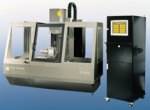


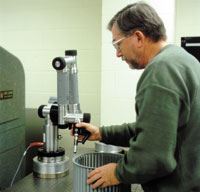

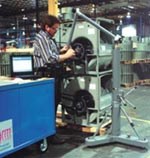
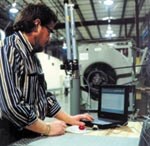
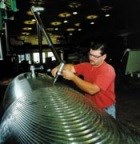




.png;maxWidth=300;quality=90)














